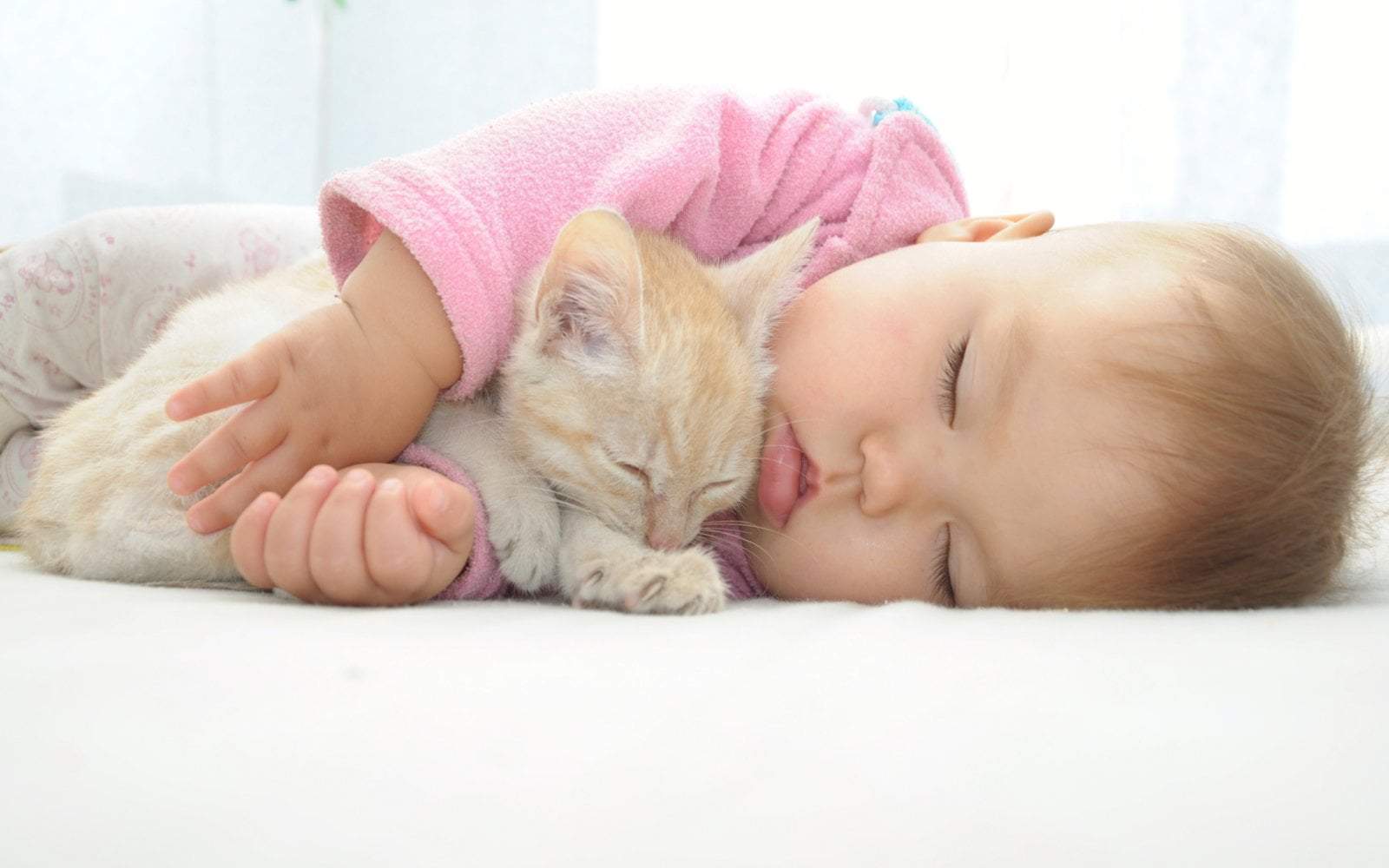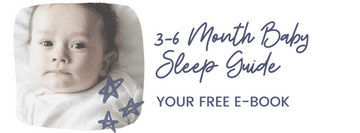
How to cope with a catnapping baby
Catnapping. Now that is a word that strikes fear into the heart of all parents!
Far from the glamorous connotation of stretching out like a snoozing cat in a puddle of sunshine, catnapping usually means not enough sleep for your baby. For a parent, it can mean frustration, it can mean skipping a shower, it can mean cold cups of tea, it can mean grouchiness and furrowed brows and tears.
In this article:
- What is a catnap?
- Is catnapping bad for my baby?
- What causes catnapping?
- How to stop catnapping
Feeling confused about your baby's sleep needs?
Let our sleep experts help you every step of the way. Together we can solve your little one's sleep challenges
Choose your Sleep Solution
If your baby is only taking short naps throughout the day and you'd like to get them napping for longer, we can help! Our Little Ones App has all the information and tools you need to set your baby up for success and our certified sleep consultants are available, day and night, if you need further guidance or support.
What is a catnap?
So what, technically, is a catnap? Felines aside, catnapping in babies refers to them sleeping for only one sleep cycle at a time during the day. This will be between 35-45 minutes. Sound familiar?!
Catnapping is a very normal developmental stage that all babies go through. It can start as early as 8 weeks old, but usually peaks between 4-6 months of age.
A quick note... if your baby is waking BEFORE the end of their sleep cycle (for example, after just 10, 20, or 30 minutes) this is still considering "catnapping" but it's not the developmental catnapping stage that all babies go through. In this case, there will be a specific reason why your baby is waking like under or over tiredness, hunger or discomfort. We'll discuss this in more detail later in this article!
Is catnapping bad for my baby?
We wouldn't describe catnapping as "bad" - that's not really a word we use when it comes to baby sleep. I mean, ANY sleep is a good thing right?! Catnapping can definitely be unsustainable though, for both you and your baby.
If your baby is taking short daytime naps, but they are sleeping really well overnight, you might not be too concerned about their catnapping. But sadly, that great nighttime sleep probably won't last. Prolonged catnapping will eventually impact a baby's nighttime sleep, due to a build-up of over tiredness. You can read more about this HERE.
Once your baby is in a cycle of chronic over tiredness, it can be hard to break free of that cycle but it IS possible. If you want to give catnapping the boot and guide your baby towards more consolidated naps, the first step is to look at what might be causing your baby to wake after one sleep cycle...
A game changer in the world of baby sleep.
Using cutting edge technology, our Sleep-0-Rhythm automatically adjusts your little one's daily schedule based on sleep tracking events to make your life easier and your little one’s sleep schedule more manageable.
Choose your Sleep Solution
What causes catnapping?
Depleted melatonin
If your baby starts catnapping around 8 weeks old, this is usually due to the maternal melatonin now fully having left their system and their body needs to start producing its own melatonin. You can read more about the 8 week sleep regression HERE.
Say goodbye to sleepless nights.
Join over 800,000 families worldwide who are enjoying excellent sleep with our Sleep Programs, created by experts in the field of pediatric sleep.
Choose your Sleep Solution
Melatonin is the sleep hormone that helps us to fall asleep and stay asleep and it is only produced in the dark. So at this age, your baby ideally needs to start napping in a dark room so that their body can produce and release this sleep hormone, which will help them to nap for longer than one sleep cycle.
Sleep cycle maturation
All babies drift between sleep cycles for naps and night-time sleep, however, around 4 months of age, the part of the brain responsible for sleep matures and babies begin drifting less easily between sleep cycles. In fact, most babies will start to wake fully between sleep cycles from around 4 months onwards. You can read more about the 4 month sleep regression HERE.
Until your baby knows how to fall asleep independently (in other words, self-settle), their naps are going to continue to be one sleep cycle long, because they will be relying on you to put them back to sleep between each sleep cycle. If you need some guidance around gently coaching your baby to self-settle, our Little Ones App will get you there.
Your baby is over or under tired
This is a really common one, especially in babies under 3 months old, and something that is actually very easy to remedy!
A baby who hasn't had enough awake time, and isn't quite ready for sleep yet, is never going to sleep past their first cycle... no matter what you do! Equally, an overtired baby will really struggle to go back to sleep in between sleep cycles.
A trap that a lot of parents fall into is not realising how quickly their baby's sleep needs change - especially in the first 6 months. If you are still following newborn wake times for your 3 or 4 month old baby, they are simply not going to be tired enough to have a long nap during the day, and you'll have a serial catnapper on your hands!
Then, if your baby is only having short catnaps everyday, this can cause a build-up of over tiredness, which then triggers more catnapping! It's a cycle your baby can easily get stuck in.
Having your baby follow our age-specific sleep schedules in the Little Ones App is the best way to rule out both over or under tiredness as a cause for your baby's catnapping.
Your baby is hungry
A hungry baby will not sleep for long. If your baby is a chronic catnapper though, it can be hard to know when to feed them or whether they're tired or hungry or both!
If your baby is not feeding very efficiently, they might only nap in short stints because they're genuinely hungry. This is more common with babies who have a tongue tie, reflux or bad wind, or babies who are habitual snack feeders.
Startle reflex
All babies are born with a reflex called the Moro reflex, which usually integrates somewhere between 4-6 months of age. If your baby is not swaddled, this reflex can cause them to suddenly startle awake when they come into the lighter sleep stage at the end of their sleep cycle. Swaddling helps to suppress this reflex so that they can drift into their next sleep cycle without waking.
You can safely swaddle your baby until they are rolling, then we recommend transitioning to an arms-out baby sleeping bag or sleep sack.
Let's get your little one's sleep sorted ASAP!Our award-winning Sleep Programs will solve your baby's sleep challenges in no time. Take advantage of our new low prices while they last!
Choose your Sleep Solution
The conditions for sleep aren't quite right
A baby's sleep environment has a big effect on their ability to fall asleep and stay asleep, especially from around 8 weeks old, as they come out of their "sleepy newborn" phase. From this age, it can be really helpful to have a dark room for sleep and to play white noise during your baby's naps and overnight sleep.
Check out THIS article for more info on setting up the perfect sleep environment.
Your baby is sick or uncomfortable
Catnapping can be a big indicator of sickness in babies, even if no other symptoms are present. A baby who is feeling unwell, has a sore throat or ear infection will usually catnap because they are sore or uncomfortable and unable to go back to sleep between cycles as a result.
My youngest had frequent ear infections as a baby, which had no other symptoms - she didn't get a temperature or a fever, or even appear sick! The only way I knew something was up, was because she'd start catnapping at her lunchtime nap. If your baby is an habitual catnapper though, you may not recognise catnapping as a sign that your baby is unwell.
Ongoing catnapping can also be due to other conditions making your baby uncomfortable, such as a tongue tie, reflux or food allergies/intolerances. You can read more about these conditions HERE.
How to stop catnapping
Catnapping is a normal developmental stage that all babies will go through so, sadly, there's no way to prevent it altogether! BUT there are definitely things you can do to help your baby through this stage and encourage longer naps.
- Set your baby up for success with the perfect sleep environment - a dark room, white noise and swaddle/sleeping bag.
- Follow the age-appropriate awake times in our Little Ones App to ensure your baby is perfectly ready for sleep at nap times.
- Make sure your baby has a full belly and is well-winded before naps so they don't wake hungry or uncomfortable.
- For babies under 6 months, actively resettle them back to sleep when they wake between sleep cycles. Treat it like a night wake - keep the room dark, keep their white noise playing and try to avoid too much interaction. Resettling your baby in between sleep cycles will help them to learn that they can sleep for longer.
- From around 3-4 months old, start to guide your baby towards self-settling at the start of naps and bedtime. This will give them the best chance at resettling themselves back to sleep in between cycles. Our Little Ones App has several, gentle methods you can use to teach your baby to self-settle.
- If everything else is lined up and your baby is waking between sleep cycles purely out of habit, try Rouse to Sleep. This is a cool little trick for getting your little one to move into their next sleep cycle. To do this, you'd go into their room 10-15 minutes before they'd normally wake and rouse them gently by patting their arm or stroking their head - just enough so that they stir but don't wake. They should then resettle into another full sleep cycle. It sounds scary, I know, but it does work!
Catnapping is something every baby will do at some point. My youngest had to be resettled between sleep cycles just about every 2nd day for a few weeks, until her sleep consolidated and she learnt to nap for longer. It’s simply a process that babies go through!
If you've followed the steps above to give your baby the best chance at napping for longer, you will find your baby can sail through this stage in their development. If you do need a bit of a helping hand though, make sure to check out our Little Ones App, where our certified sleep consultants are available to give you more personalised advice and support.

Receive product and services updates, promotional offers and other marketing communications based.





